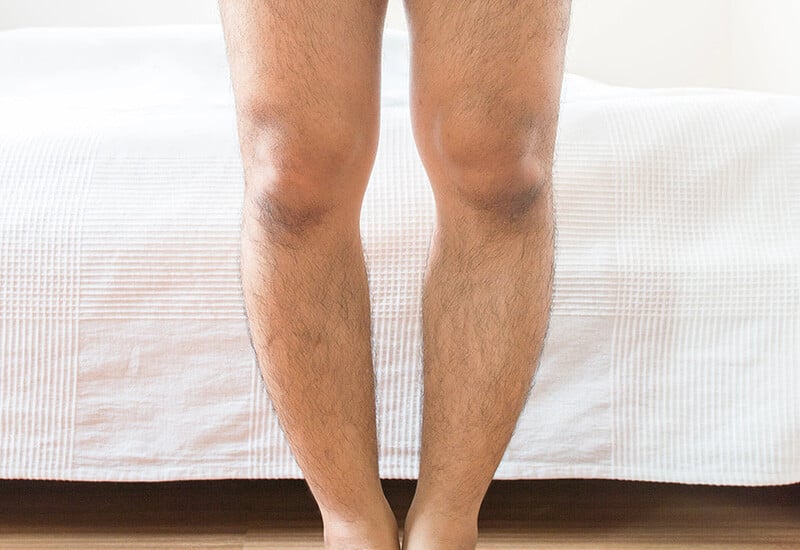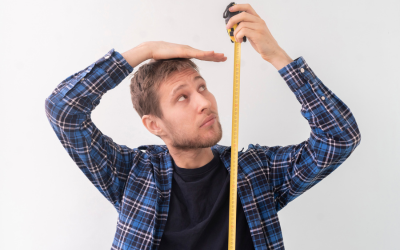Can Bow Legs Correction Make You Taller?

Bow legs, a condition where the knees stay wide apart when a person stands with their feet together, have long been a source of concern for many individuals. Beyond the physical discomfort they may cause, there's some confusion about whether bow leg correction surgery can increase one’s height. In this blog, we delve into the truth behind this belief, examining whether bow leg correction procedures can truly make you taller.
What Are Bow Legs?
Before diving into the potential effects of correction procedures, it's essential to grasp what bow legs are and what causes them. Bow legs, medically known as genu varum, is a condition characterized by an outward curvature of the legs, resulting in a distinct bow-shaped appearance when standing with the feet together. It is a common condition in infants and toddlers as their legs develop, but it usually resolves on its own by the age of 3 or 4.
However, in some cases, bow legs persist into childhood and adulthood, causing issues with gait, balance, and joint pain. Individuals with bow legs may experience discomfort, instability, or even difficulty walking, depending on the severity of the condition.
Bow legs are linked to various factors, including skeletal abnormalities, genetic predisposition, nutritional deficiencies, or underlying medical conditions. Treatment options depend on the severity of the condition and may include observation, corrective footwear, physical therapy, or surgical intervention for severe cases. Early diagnosis and appropriate management are crucial for preventing complications and ensuring optimal leg alignment and function.
Bow Leg Correction Surgery
Several treatment options are available for bow leg correction, ranging from conservative measures like bracing or physical therapy to surgical interventions such as osteotomy, where the bones are cut and realigned. While these procedures aim to improve the alignment of the legs and alleviate associated symptoms, their primary goal isn't to increase height. Instead, they focus on restoring proper function and stability to the legs.
Tibial Osteotomy Bow Leg Correction
The most commonly performed procedure for correcting bow legs is a tibial osteotomy. During this procedure, a small incision, typically one-half inch in length, is made just below the knee, allowing access to the shinbone. The bone is then carefully cut and reshaped to correct the alignment issue and straighten the leg.
To maintain proper alignment during the healing process, a special device, known as an external fixator, is often applied to the outside of the leg through smaller incisions, typically one-quarter inch in size. This fixator not only helps to support the bone as it heals but also strengthens the leg.
One notable advantage of this procedure is that patients typically do not require a cast or crutches post-surgery and can bear weight on the leg immediately. The overall healing process usually takes around two months, during which time scarring is minimal and tends to fade over time.
Patients undergoing this procedure typically spend just one night in the hospital, with the surgery itself lasting approximately one hour. Many patients report relief from knee pain following the procedure, with minimal discomfort experienced during and after surgery. Additionally, some patients may experience a slight increase in leg length, adding approximately half an inch.
While some tibial osteotomy patients appear slightly taller post-procedure due to improved posture and alignment, this effect is often minimal. Correcting bow legs primarily addresses the alignment of the bones in the legs rather than stretching or elongating them.
Bow Leg Correction and Height Increase
To comprehend why bow leg correction isn't synonymous with height increase, it's crucial to understand how bones grow. During childhood and adolescence, the long bones in the legs undergo a process called longitudinal growth, primarily occurring at the growth plates located near the ends of the bones. Surgical procedures for bow leg correction primarily involve realigning the existing bone structure rather than stimulating new bone growth. Therefore, the potential for height increase through conventional medical procedures is limited.
On the contrary, height lengthening surgery is a procedure that can add up to 6 inches to one’s height. Of course, the maximum height increase achieved depends on the severity of the patient’s deformity.
Factors Affecting Perceived Bow Leg Correction Height Increase
 It's essential to recognize that the primary goal of corrective procedures is to address the leg deformity rather than to directly affect height. Here are some considerations:
It's essential to recognize that the primary goal of corrective procedures is to address the leg deformity rather than to directly affect height. Here are some considerations:
Strengthening Exercises: Engaging in targeted strength training exercises, particularly those that focus on the lower body, can help improve posture, muscle tone, and overall body alignment, which may contribute to a taller appearance.
Optimal Nutrition: Consuming a balanced diet rich in essential nutrients, particularly calcium, vitamin D, and protein, is crucial for bone health and growth. Adequate nutrition supports bone density and can help maximize height potential.
Maintaining Good Posture: Practicing good posture can make you appear taller by elongating the spine and minimizing curvature of the back. Focus on standing and sitting up straight, with shoulders back and chin up.
Avoiding Activities that Stunt Growth: Certain lifestyle factors, such as smoking, excessive alcohol consumption, and poor sleep habits, can negatively impact growth potential. Avoiding these habits can support healthy growth.
Consultation with an Orthopedic Specialist: Discussing concerns about orthopedic disorders/deformities affecting height with an orthopedic surgeon can provide individuals with personalized guidance and recommendations based on their circumstances.
Ultimately, while correcting bow legs can improve overall alignment and mobility, increasing height significantly after such procedures may be limited. However, adopting healthy lifestyle habits and focusing on aspects within your control can help optimize overall health and well-being, contributing to a taller and more confident appearance.
Anyone interested in bow leg correction or height lengthening surgery should contact the Height Lengthening Institute to schedule a consultation with Dr. Shahab Mahboubian, D.O., MPH, the renowned limb lengthening and orthopedic surgeon.


